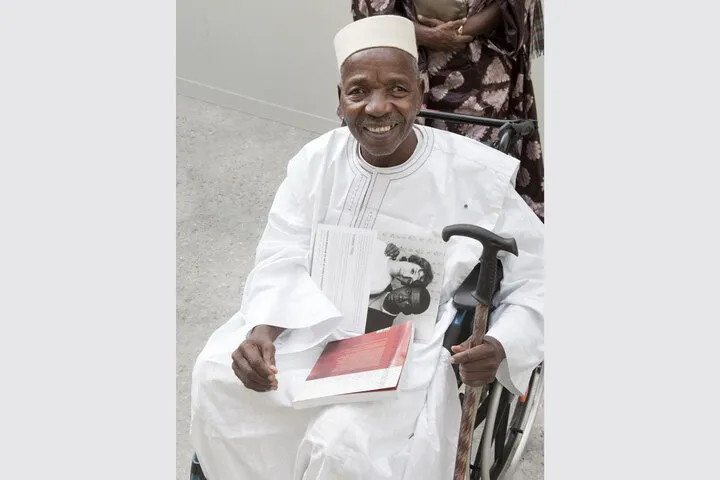Now celebrated as the father of African photography, Seydou Keïta (ca. 1921–2001) operated a busy studio in Bamako, Mali (until 1960, French Sudan), between 1948 and 1963, a time of radical transformation—from rural to urban and from colonial to postcolonial—both in that country and across Africa. The thousands of people Keïta photographed during those years represented a cross-section of Malian society that encompassed, among others, Bamako cultural elites, ordinary citizens, nomads, students, and army officers.
While Keïta did style his subjects—fanning out a skirt here, adjusting the position of a hand there, and even providing European clothing, watches, motorcycles, cars, and radios as props—he also encouraged their active participation in the process. Much of his studio’s popularity among Bamakois rested in his skill at presenting them, and allowing them to present themselves, as they wished to be seen: elegant, cosmopolitan, and above all, modern.
In 1963 Keïta was forced to close his studio by Mali’s post-independence socialist government and start work as its official photographer. His studio portraits were anonymously exhibited for the first time in the West in 1991 in a group show at New York’s Museum for African Art; a subsequent solo show at the Fondation Cartier in Paris in 1994—of prints made from negatives brought to France from Mali—was a sensation, sparking an explosion of interest in Keïta’s work as well as in African photography in general. With international fame came more new prints, made both in Keïta’s lifetime and after his death. Larger in scale and cooler in tone than the original photographs, they are now how most contemporary viewers experience Keïta’s images.
To Western scholars and curators, Keïta’s photographs—coinciding with the lead-up to, and early years of, Malian independence—are both captivating portraits of self-defined individuals and an important record of African life at a moment of transition. To Keïta’s Malian clients, the photos were much more. Pocket-size and made for personal use, they signaled worldly success, commemorated special events and holidays, assisted in matchmaking, and even served as talismans.
On view now at the Brooklyn Museum, the exhibition “Seydou Keïta: A Tactile Lens” focuses on the latter aspect of Keïta’s photographs, emphasizing the role of self-fashioning in their creation. Organized by guest curator Catherine E. McKinley with Imani Williford, the museum’s curatorial assistant for photography, fashion, and material culture, it features more than 200 photographs, including negatives and vintage prints, as well as examples of clothing, jewelry, and textiles. With that show on view through March 8, below is a guide to five of Keïta’s key works.
